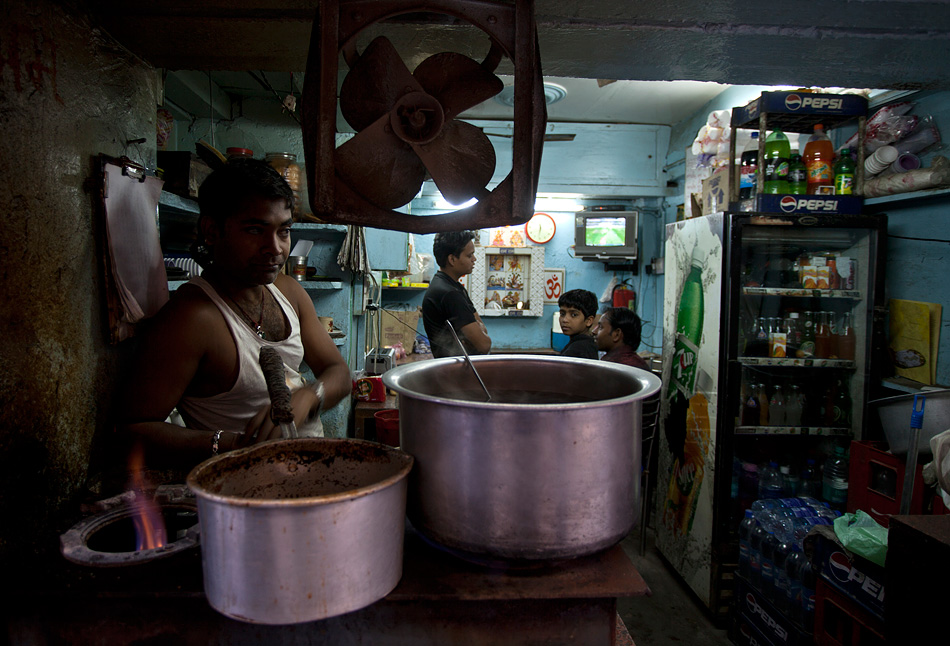I usually make two visits to Hampi every year. If there is one thing that I necessarily look forward to during every visit, it is the climb to Matanga Parvata to watch sunrise over the landscapes of this ancient city.
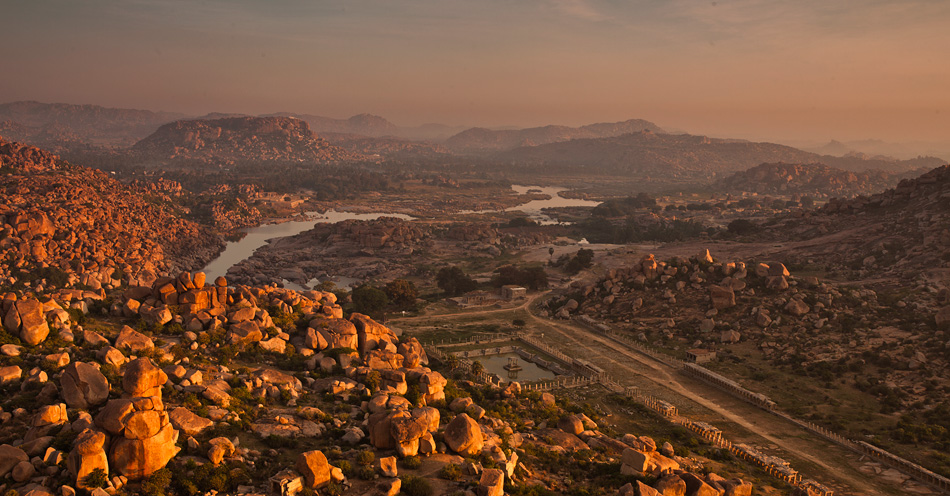
Matanga is perhaps the tallest hill in Hampi, on the right bank of Tungabhadra River. From the vantage point on the top, the sun rising over a misty landscape during the winter months highlights a wave of ridges that line up the eastern sky. As the big blob of light moves well above the hills, the golden lights sparkle on the smooth surface of the boulders littering the landscape. Tungabhadra shines in the skylight, with occasional coracles moving up and down on its calm surface.
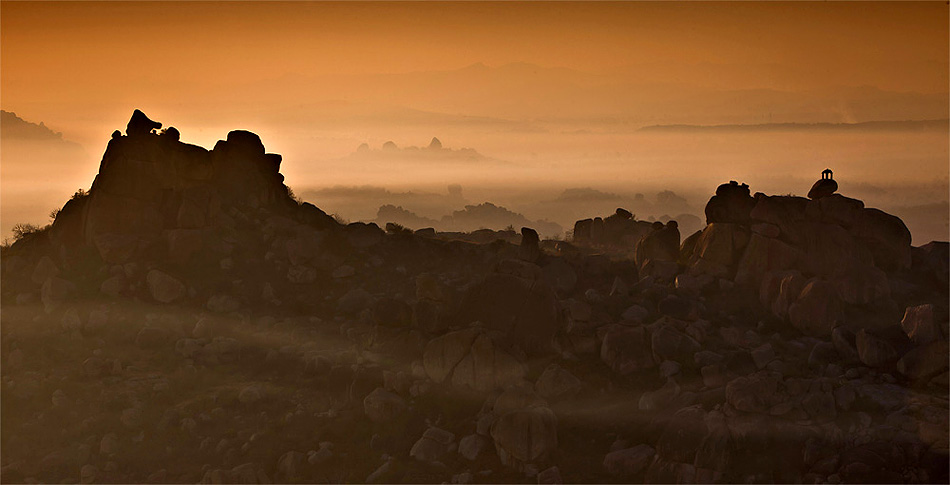
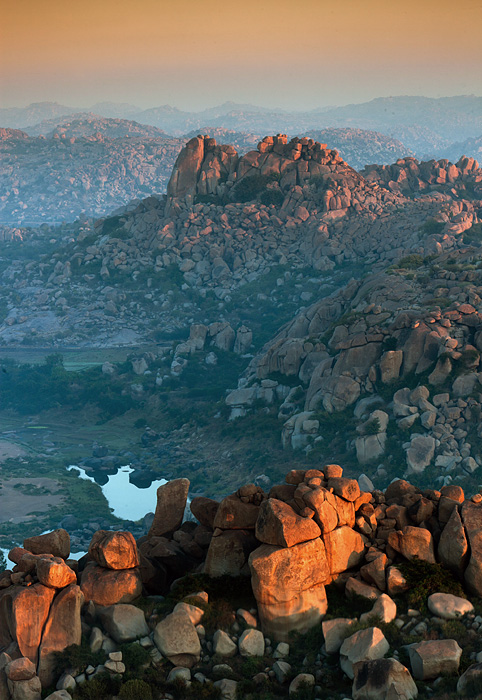
The steep fall of Matanga towards the east offers a bird’s-eye view of Achutaraya Temple right below and an uninterrupted view of the sunrise above. On the western side of the hill, the tall spire of Virupaksha Temple appears to challenge Matanga in its height. All around, remains of the erstwhile Vijayanagar Kingdom – Vijaya Vithala Temple, Krishna Temple, Lotus Mahal and several mantapas offer insights to the city’s past.
A little downstream, on the other side of the river, is Anjanadri Hill – a place of many legends. While Hampi’s hills are often credited to be the place where the kingdom of monkeys from Ramayana once existed, Anjanadri is known as the place where Hanumantha was born. The hill now houses a hoard of monkeys that usually settle around an Anjaneya Temple, as if to prove a point.
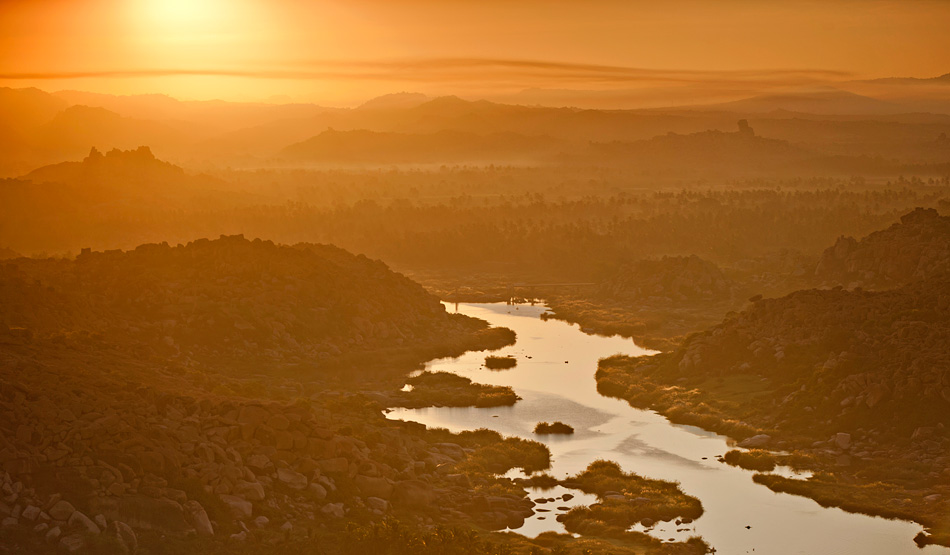
While Matanga is the highest point on the right bank, the Anjanadri probably takes the honour on the left bank. Near the base of Anjanadri, the river takes a steep turn from its northwardly flow to east, which allows a line-of-the-river view of sunrise from the hill top. In the winter months, the morning landscapes over the river appear bathed in gold – a spectacle that stays in the heart as permanently as it does in the camera.
It was Pico Iyer who made me long to visit Lamayuru. In his enchanting travel story on Ladakh in New York Times, he describes the approach to Lamayuru and its mountains with extra vigour.
“… along a zigzagging, one-lane road that winds up and up above a sheer drop, I recalled at every heart-stopping turn why the word “gompa” means “solitary place,” until suddenly, as we rounded a corner, Lamayuru Gompa was there before us, high up on a cliff.
…I had thought myself hard to impress after traveling for decades across the Himalayas, I heard a gasp escape my jaded lips, and realized I was glimpsing a location even more unlikely than that of the Potala Palace in Lhasa, and a temple even older than that wonder of the world.”

I put Lamayuru high on the list during my first visit to Ladakh, but did not expect the journey to become an adventure. The day before I was to travel from Leh to Lamayuru, clouds had taken over the sky all over Ladakh. Heavy rains through the night had fueled angry streams that poured truck loads of mud on the roads and broke bridges that they flowed under. The next morning, an hour’s journey from Leh, we were stopped by a landslide – a slushy mass of mud under which the road had disappeared.
That, however, wasn’t something to worry about. Clearing the road was a ten-minute job for the BRO earth movers, though the powerful machines took more than an hour to arrive at the location. The real trouble awaited us only a kilometer ahead, where a roaring stream had taken away an iron bridge that came on its way. Unlike our last obstacle, this one wasn’t going to be put back in shape in ten minutes. We had to find another way out.
As we waited and the day progressed, vehicles kept piling up on either side of the road. Some villagers built a temporary walking bridge by laying poplar stems across a narrow crossing. Buses arriving on either side struck deals to exchange passengers. It took a few hours of waiting, but eventually we were on our way.
On reaching Lamayuru a few hours later, I realized that the landslide had worked to our advantage. The day before our arrival, every guesthouse in the village was running full and a few people even had to sleep on the veranda of the houses or floors of restaurants. But thanks to the closed roads, taxis weren’t plying today and the tourist crowd had stayed off. Guesthouses were going empty.
The prize for arriving at Lamayuru was a view found nowhere else in Ladakh. The mountain slopes below the village once supported a now-drained-off gigantic lake. The slopes that were once under water appeared like a big splash of yellow butter over the otherwise dark-brown mountains that rise steeply from the base of the valley. Often called ‘moonland’ by the locals, these gently undulating mass of hardened mud was supporting a glacial water body that existed millenniums ago. With the passage of time, erosion from wind and water had created curious patterns all over the slopes – some like bastions of castles rising above the steep cliffs, some like smooth sea of sand dunes and some that looked like massive cheese blocks with many holes in them.
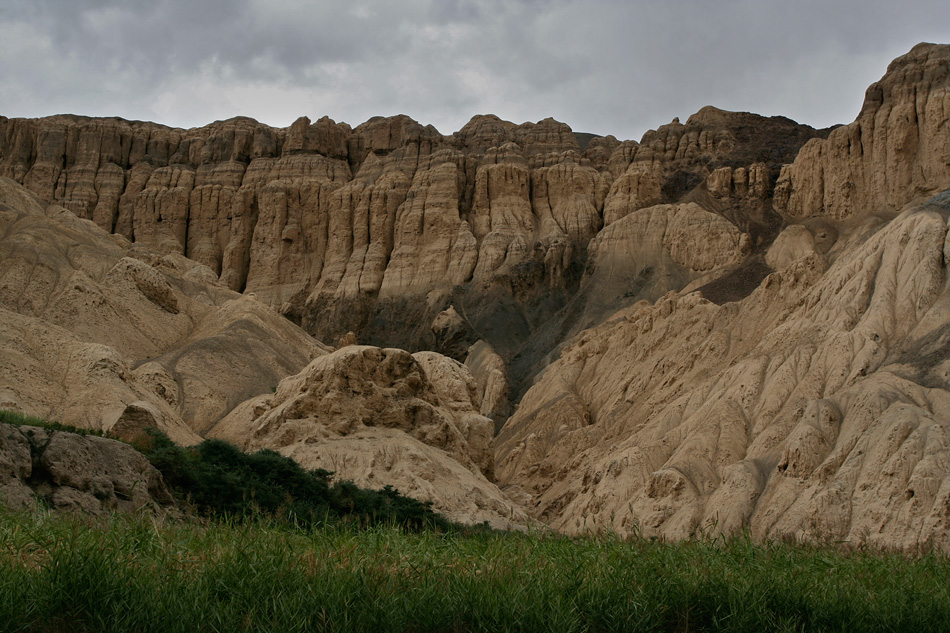
Standing high above these magical slopes was the monastery of Lamayuru built over the mud-castles created by nature. The monastery’s construction crept into the crevices under its foundation, with its doors and windows making surprise appearances to break the contiguity in the slopes holding them. A bunch of chortens stood high above the monastery, making an effort to stretch a little higher the already-high mountains that reached for the clouds.
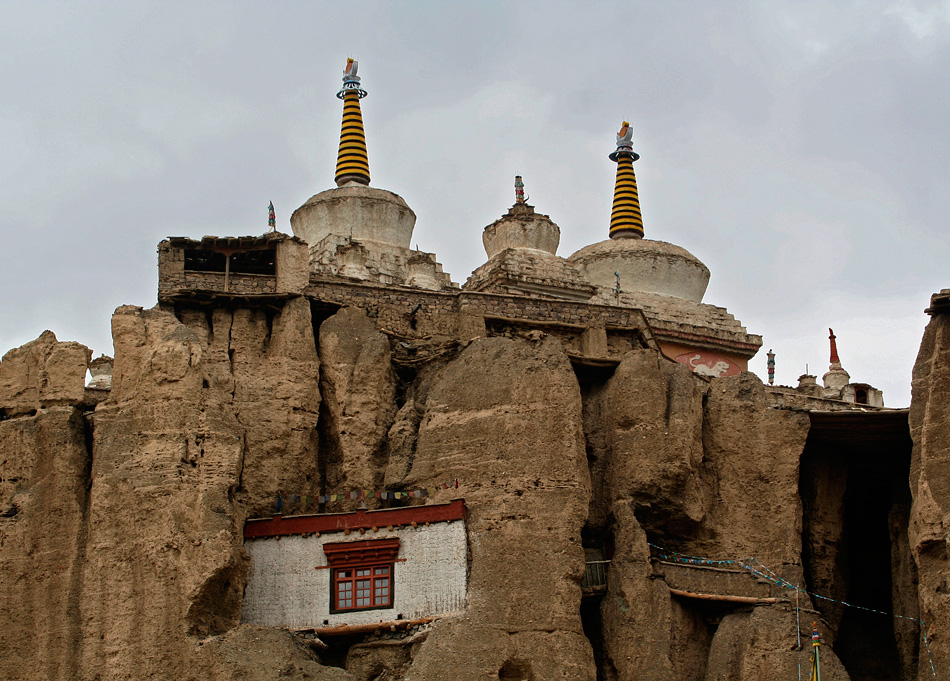
The monastery’s past is a mix of history and legends. It is one of the oldest Buddhist Monasteries in the region, built in eleventh century by monk Rinchen Zangpo who was known for his translation of Buddhist texts from Sanskrit to Tibetan. The monastery was a witness to several confrontations between the armies of Ladakh with those of Kashmir and Central Asia, with fortunes swinging in different ways through 13th century to 15th century. The monastery had to be rebuilt again after it was completely destroyed by the army of King Zorawar Singh in early 19th century. When Central Asian armies retreated from Lamayuru after facing natural calamities created by protective forces, the place was declared a sanctuary for criminals, who were deemed free of their acts after entering the boundary of the monastery.
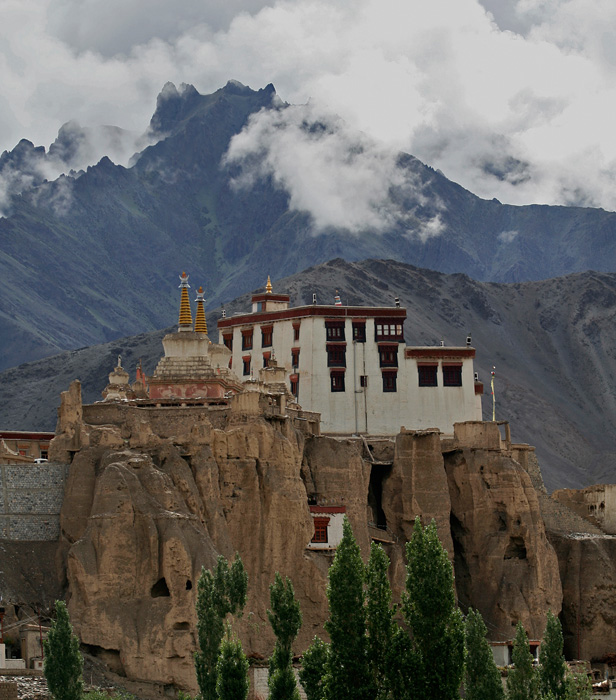
I spent my days in Lamayuru walking up and down the slopes that offered me many perspectives of the ‘moonland’. The roads, usually empty but now completely silent thanks to the broken bridge, allowed us to walk in peace without the occasional noises that broke the peace in the mountains. The clouds that had threatened our arrival at Lamayuru continued to hover over the mountains, but did not create further trouble. Two days later, when the news came that a new bridge was now ready in place of the broken one, it was time for me to return before a new wave of visitors would hit Lamayuru.








